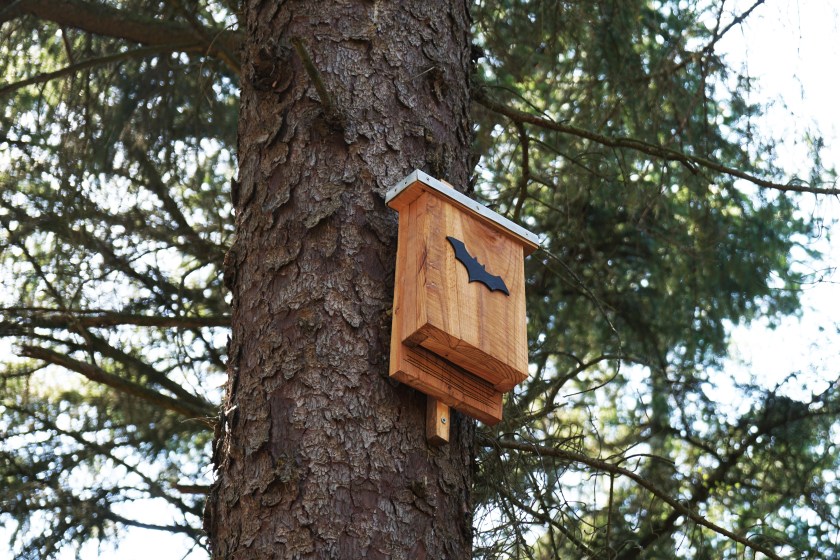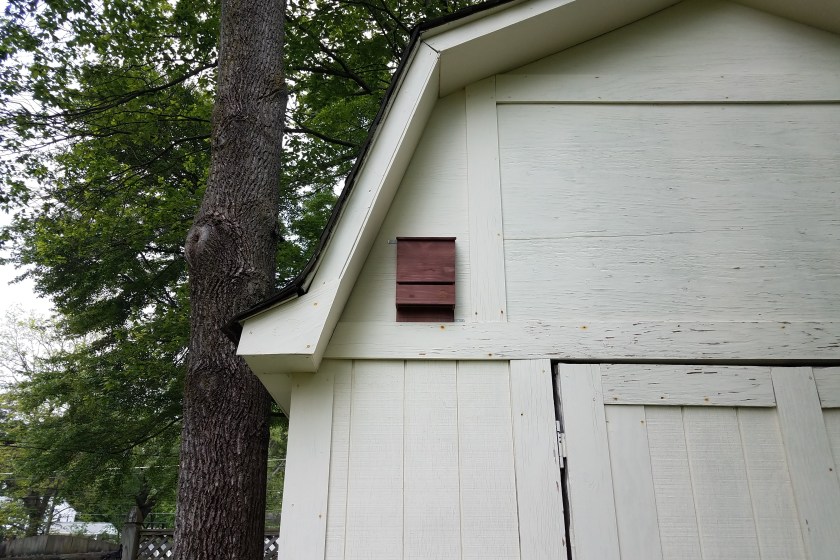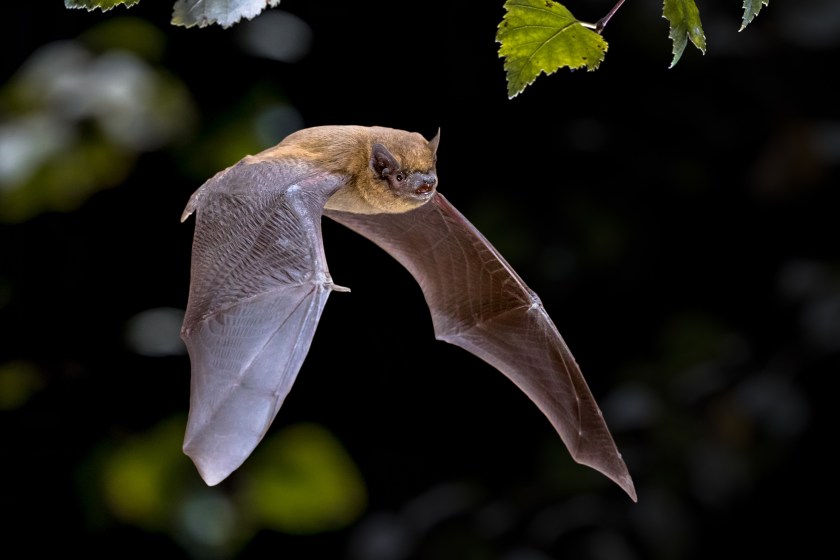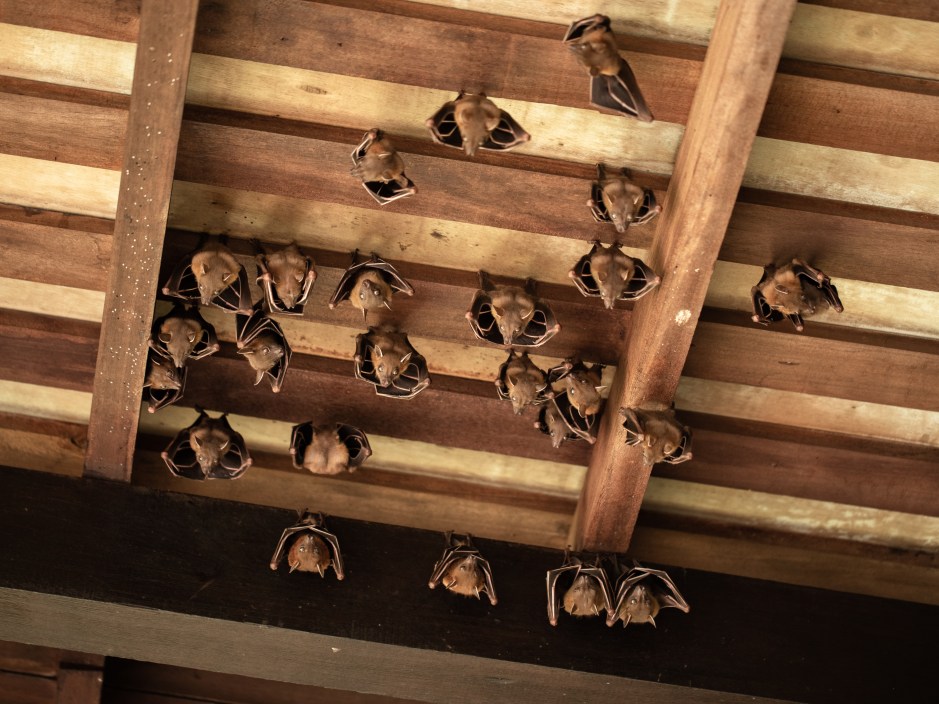Bats. These night-hunting, insect-eating animals are so valuable that they're considered a keystone species in many ecosystems and have evolved as one of the most important pollinators, fertilizers, and pest controllers known to man.
Bats are one of the most beneficial bug-devouring machines in North America. If you didn't know, you absolutely want them around your home (though, trust us, you don't want to keep bats as pets). And you do want to attract a bat colony to stay a while. The best way to do that is to hang a bat house.
Why You Should Hang a Bat House

Getty Images, Axel Bueckert
Because most species of bats hunt almost exclusively after dark for those pesky night-flying insects that annoy us humans, it's not a bad idea to keep them happy and coming back every year. Not only do they control mosquitoes and black flies, they also can take care of some of the most damaging and invasive insects including wasps. Having a population of bats near your home can help you avoid the use of chemical pesticides, and we can all get behind that.
There are many tried-and-true methods to invite some of these great insect predators into your yard to dine on the things that are trying desperately to dine on you. Installing a new bat house also is a great way to teach the kids about the effectiveness of natural methods of taking care of both the environment and ourselves. Trust us, you won't regret setting up your own bat house in the yard.
Best Time of Year to Hang a Bat House
Many bats migrate or hibernate during winter, when insect supplies dwindle due to the cold weather. Therefore, the best time to hang a bat house is before the spring when they return or awaken and go looking for new roosting sites.
Ideally, you should install your bat house during fall or winter, so the structure can acclimatize and lose any scents from yourself or the materials—such as water-based paint and caulk—the box is made from. You want your DIY bat box to blend into the local environment as much as possible. By properly installing a bat roost well before bats are in the area, you can attract these pest-control specialists to your property for spring and summer.
Best Locations to Hang a Bat House
There are two main locations to consider for successful bat house installation: on a pole or on a structure such as a barn or even the side of your home.
As shown in the video above, mounting a bat house on a building gives the bats more room to take flight each evening, and it can also provide some insulation. Placing bat houses on trees is a bad idea, mostly because predators can ambush bats from the tree branches above, according to the organization Bat Conservation International. However, a pole-mounted bat house is a worthy option.
Because most of the North American bat species need somewhere around 85 degrees Fahrenheit to retain their body heat and keep their young warm, it's best to face the roost box roughly south to southeast, if possible, to get the most sun exposure. This helps the box get the most possible sunlight, especially for those mornings that can still be a little chilly in the springtime.
Whatever method you choose, it's important that your roost box is at least 14 to 20 feet above the ground with little or no obstacles in their way to impede the bats from swooping in and out at their leisure. Beware of impedances such as hanging branches from a nearby tree, which may cause the animals to bypass the area for a different location. In addition, a water source is a great draw for bats, both because they need to drink it and it attracts bugs — bat dinner.
Finally, make sure to paint your new bat house properly for the region where you live. Depending on where you live, you'll do best with a dark color in northern climates or a lighter one in southern ones to help regulate the internal temperature of the box. Again the video above gives some hints on that.
Structure-Mounted Bat Houses

Getty Images, Justin Smith
Homeowners have the option to install an exterior wall-mounted bat houses. These are quite attractive to bats for several reasons: The building itself can help eliminate drafts and keep the temperature better balanced; and as long as you don't have a lot of trees close to the wall, it provides a wide-open swooping area for the animals to leave and enter. It's best to stick the box up right under the eaves of the roof to provide even more protection.
Pole-Mounted Bat Houses
A pole-mounted bat house is a great family project to get the kids involved. It takes a bit more work, materials, money, and labor to do it, but the rewards are great, as they can be strategically placed anywhere you want. This also provides the opportunity to double up on single-chamber bat houses by placing them back to back, potentially doubling occupancy of the helpful pest-control critters that come to roost.
Dispelling Myths About Bats

Getty Images, CreativeNature_nl
One of the biggest misunderstandings about bats concerns what type of animal they are — they're not rodents but mammals. Bats gather in their colonies and give birth to live young from May into June.
Some bat species hibernate, some migrate, and some do both. But they all will be on the hunt for a good posting location once the bug-eating season really arrives.
Bats are well known for their echolocation, or "radar," but they actually have very good eyesight, making "blind as a bat" an old wives' tale.
While rabies is a concern for most wild animals, bats contract rabies far less frequently than most other wildlife.
Unfortunately, bats are quickly seeing their natural habitats wiped out across North America. That makes this a bat conservation issue. Like it or not, these little creatures are a part of our natural world, and they can use all the help they can get right now. Therefore, hanging a bat house is just another way you can help contribute to the preservation of our planet.
READ MORE: Rattlesnakes: To Kill or Not to Kill?




